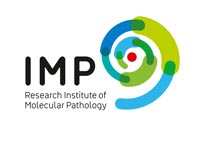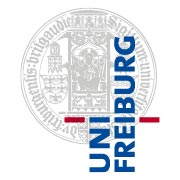Gold nanoparticles show potential for noninvasive cancer treatment

Researchers from the University of California, San Francisco and Georgia Institute of Technology have found a new way to kill cancer cells. Building on their previous work that used gold nanoparticles to detect cancer, they now are heating the particles and using them as agents to destroy malignant cells.
The researchers are a father and son, working together on opposite coasts. Their study findings are reported in the on-line edition of the journal Cancer Letters, found at Sciencedirect.com (quicksearch: El-Sayed nanoparticles).
“In an earlier study we showed how gold nanoparticles could be bound to malignant cells, making cancer detection easier. Now we have examined how the particles’ ability to absorb light helps kill those cancer cells,” said principal author Ivan El-Sayed, MD, assistant professor of otolaryngology at UCSF Medical Center.
Ivan conducted the study with his father, Mostafa El-Sayed, PhD, director of the Laser Dynamics Laboratory and chemistry professor at Georgia Tech.
Many cancer cells have a protein, known as epidermal growth factor receptor (EGFR), all over their surface, while healthy cells typically do not express the protein as strongly. By conjugating, or binding, the gold nanoparticles to an antibody for EGFR, suitably named anti-EGFR, the researchers were able to get the nanoparticles to specifically attach themselves to the cancer cells.
In the new study, the researchers incubated two oral squamous carcinoma cell lines and one benign epithelial cell line with anti-EFGR conjugated gold nanoparticles and then exposed them to continuous visible argon laser. “The malignant cells required less than half the laser energy to be killed than the benign cells,” said Ivan. “In addition, we observed no photothermal destruction of any type of cell in the absence of gold nanoparticles at these low laser powers.”
“We now have the potential to design an ’all in one’ active agent that can be used to noninvasively find the cancer and then kill it,” Ivan said. “This holds great promise for a number of types of cancer.”
“There is the real potential to design instrumentation to allow noninvasive detection and treatment of the particles in living humans,” Mostafa said. “The particles can be used to create multiple designer agents targeted toward specific cancers. Much work still needs to be done, but at some point, we hope to be able to inject these compounds into patients with cancer in a search-and-destroy mission. Finding cancers not apparent to the eye will help physicians detect cancers earlier. Exposing the cells to the correct amount of light would then cause destruction of the cancer cells only and leave the healthy cells alone.”
The technique isn’t toxic to human cells. “Gold nanoparticles have been used in humans for 50 years,” Ivan said. “For example, in the past, a radioactive form of colloidal gold has been used to search for cancerous lymph nodes.”
“Our technique is very simple and inexpensive–only a few cents worth of gold can yield results. We think it holds great promise to reduce the time, effort, and expense in cancer research, detection, and therapy in humans and under the microscope,” he added.
Ivan, who sees many patients with oral cancers, hopes that in the not-too-distant future his research will pay off for his patients. “Our best chance to save lives is to catch cancer and treat it early. Our work with gold nanoparticles may result in a valuable tool in fighting not only oral cancers, but also a number of other types, including stomach, colon and skin cancers.”
The research was supported by a grant from the Chemical Science, Geoscience and Biosciences Division of the U.S. Department of Energy.
UCSF is a leading university that consistently defines health care worldwide by conducting advanced biomedical research, educating graduate students in health care, and providing complex patient care.
Media Contact
More Information:
http://www.ucsf.eduAll latest news from the category: Studies and Analyses
innovations-report maintains a wealth of in-depth studies and analyses from a variety of subject areas including business and finance, medicine and pharmacology, ecology and the environment, energy, communications and media, transportation, work, family and leisure.
Newest articles

Campylobacter jejuni-specific antibody gives hope to vaccine development
By targeting multiprotein molecule, antibody inhibits bacteria’s growth, pathogenicity. Bacterial infections resulting in enteritis, sometimes extra-intestinal infections such as sepsis, continue to be a global health concern. A leading cause…

Nanostructures in the deep ocean floor hint at life’s origin
Researchers led by Ryuhei Nakamura at the RIKEN Center for Sustainable Resource Science (CSRS) in Japan and The Earth-Life Science Institute (ELSI) of Tokyo Institute of Technology have discovered inorganic…

New catalyst developed for sustainable propylene production from biomass
Propylene production harnesses biodiesel waste byproduct. Achieving carbon neutrality requires the effective use of renewable biomass. In the production of biodiesel, for instance, glycerol is generated as a major byproduct….















